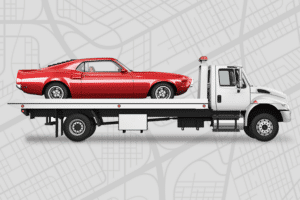Shipping oversized items is a daunting task. It’s a process that requires careful planning and execution. Mistakes in this process can lead to costly consequences. These can range from damaged goods to delayed deliveries.
In this article, we’ll explore common mistakes made when shipping oversized items and provide tips on how to avoid these pitfalls.
Whether you’re a logistics manager or a small business owner, this guide is for you. It’s designed to help you streamline your oversized shipping processes.
Understanding Household Goods in Oversized Item Shipping
In the context of shipping, oversized items refer to goods that exceed standard shipping sizes. These are items that are too large or heavy for regular parcel services.
Here are some examples of oversized items:
- Furniture like sofas, beds, and dining tables
- Large appliances such as refrigerators and washing machines
Understanding what constitutes an oversized item is the first step in avoiding shipping mistakes. It helps you plan better and choose the right shipping method for your items.
Accurate Measurements: The Foundation of Oversized Shipping
One common mistake in oversized shipping is inaccurate measurements. The dimensions and weight of your item are crucial in determining the shipping cost and method. Underestimating the size or weight can lead to unexpected charges. It can also cause issues with the carrier’s capacity, leading to delays or even refusal of service.
On the other hand, overestimating can result in overpaying for shipping. Therefore, it’s essential to measure your oversized items accurately before shipping. This will help you avoid unnecessary costs and ensure a smooth shipping process.
Researching Carrier Restrictions and Requirements

Different carriers have different rules for oversized items. Some may have strict size and weight limits, while others may require special handling or equipment. Not researching these restrictions and requirements can lead to problems. Your shipment could be rejected, delayed, or incur additional fees.
To avoid these issues, always research your chosen carrier’s rules for oversized shipping. This will help you prepare your items correctly and choose the best carrier for your needs.
With uShip, when your bids start to roll in, you can ask questions to carriers about these sorts of things to make sure you both see eye-to-eye on what the expectations are. Our platform makes it easy to keep your finger on the pulse.
The Consequences of Inadequate Packaging

Packaging is crucial when shipping oversized items. It protects your items from damage during transit. However, inadequate packaging can lead to a host of problems. Your items could get damaged, lost, or even cause harm to others.
Therefore, always ensure your items are well packaged. Use sturdy sustainable materials and secure all loose parts. This will help ensure your items arrive safely at their destination.
uShip users don’t have to worry about packaging. Carriers on our platform blanket-wrap items and expertly secure them on their vehicles. All you have to do is show them what needs to be moved — they’ll take it from there.
Protecting Your High-Value Oversized Items
Protecting what you ship is a critical aspect of moving oversized items. It provides a safety net in case of damage or loss during transit.
Carriers have their own insurance, but one of the best things about uShip is our uShip Protection Plan. This goes above and beyond what your carrier’s coverage may have and helps protect your shipment should you experience a bump in the road.
Comparing Carriers to Save on Shipping Costs
One common mistake is not comparing different carriers before shipping oversized items. Each carrier has its own pricing structure and services. By comparing carriers, you can find the best rates and services for your specific needs. This can help you save significantly on shipping costs.
With uShip, you have access to a massive network of carriers. This allows you to compare and choose the carrier that offers the most competitive rates and meets your shipping requirements. Ultimately, uShip’s marketplace makes it convenient for users to save on shipping costs by selecting the best carrier for their oversized items.
Navigating Transportation Regulations and Compliance
Transportation regulations can be complex, especially for oversized items. Ignorance of these rules can lead to penalties, delays, or even shipment rejection.
It’s essential to understand and comply with all relevant regulations. This includes local, national, and international rules, depending on your shipping route. Transporters on our platform know all of this; they do it every day. You can skip the worry by booking a carrier on uShip who understands the ins and outs of large and bulky transport.
Communication with Carriers: Avoiding Misunderstandings
Clear communication with your carrier is vital. It helps to avoid misunderstandings about the nature of your oversized items.
Inform them about the item’s dimensions, weight, and any special handling requirements. This ensures they can provide the right equipment and services for safe transit.
This is easy when you use uShip. Direct communication is available right inside the platform.
Disassembling Items to Reduce Shipping Size and Costs
If possible, disassemble your oversized items. This can significantly reduce the shipping size and, consequently, the cost.
However, ensure you properly package each part. This prevents damage during transit and makes reassembly easier at the destination.
Without sounding like a broken record, uShip users don’t have to worry about breaking anything down at all (unless you want to). Your carrier handles everything for you — that’s the beauty of it all. As mentioned earlier, carriers blanket-wrap goods so you can rest assured they arrive safely.
Conclusion: Best Practices for Shipping Oversized Items
Shipping oversized items is a complex task. However, with careful planning and attention to detail, you can avoid common mistakes.
Remember to accurately measure your items, research carrier restrictions, and ensure proper packaging. Also, consider disassembling items to reduce size and costs.
If you’re going to DIY your shipments, jumping through these hoops can be a lot, but that’s why we’re here. When you’d rather not do it yourself, getting quotes from carriers who do this every day is simple, fast, and (as mentioned before), FREE!



